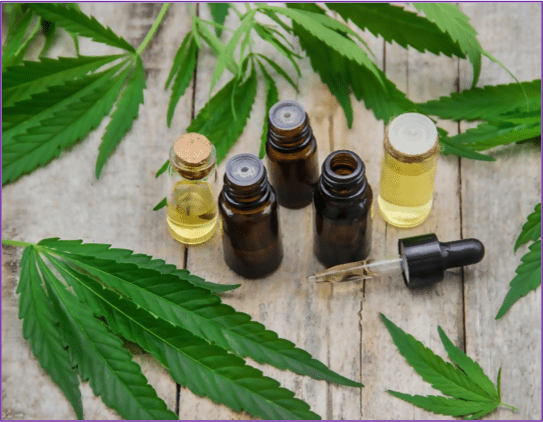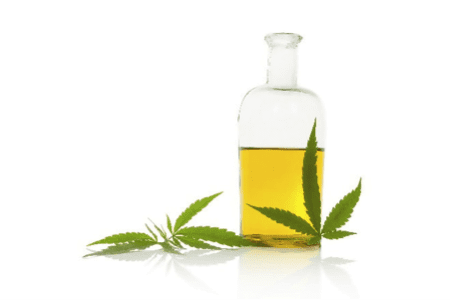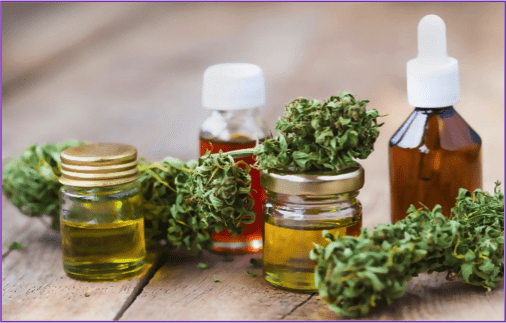
The following information is not an endorsement of nor a recommendation for cannabis or CBD. It is for informational purposes only. Please see the medical disclaimer at the end of this document. All decisions regarding this information should be discussed with your medical doctor.
There are all kinds of studies looking at cannabis. It is hard to get too specific because the studies use different methods and different elements, and generally they look at one specific issue at a time. There is no consistency as to what is being studied. Sometimes it’s just THC or just CBD that is studied. Sometimes it’s the whole plant. Some studies just look at smoking marijuana and others look at ingesting oil or tincture.
THC and CBD are cannabinoids. We make our own cannabinoids, which are part of our endocannabinoid system (“ECS”), necessary for regulating many functions in the body. THC and/or CBD may help us when we don’t have enough of our own.
Cannabis comes in different strains with different percentages of THC and CBD. The more THC in a plant, the greater high a person will experience and the more likely side effects may occur.
Cannabis contains significant amounts of the cannabinoids THC and CBD as well as many other cannabinoids, cannabimetrics, terpenes and alkamides–some 2000 additional compounds. There is some information that the whole plant is better than THC or CBD on their own. The terpenes, which are also called terpenoids, have been found to help THC and CBD be more effective.
CBD oil is made from the stems, leaves, and flowers of the hemp plant, which contains about 20% CBD. It is not extracted from cannabis. Hemp seeds only contain about 3.5% CBD.

Cannabis oils or CBD oils pressed from the whole leaf, stem and/or flower are best as opposed to an extracted THC or CBD which is then added to an oil.
It is difficult to be specific about amounts or the best way to take it, and trial and error by users is still the way to go.
Cannabinoids Affect CB Receptors Throughout the Body
THC can lock onto CB1 and CB2 receptors and trigger its beneficial effects. CBD locks onto a different receptor that can prevent the effects of THC (depending on amount). It then, in turn, can modulate response of the receptor, which can also be beneficial.
How beneficial either will be depends on the person and their deficiencies. If the ECS is working properly, neither THC nor CBD would be necessary. The reasons for a deficient ECS could be lack of nutrients, poor gut health, stress, lack of exercise, or a genetic anomaly.
Microdosing for Cannabis:
Lower dosing more frequently is something that many medicinal cannabis users are trying.
How much is a microdose? One puff of a joint, 1.29% for vaping, 2–3 mg for edibles. This would be done every two hours. It lowers the amount needed overall and lowers side effects. Discuss this with your medical doctor before trying.

Type of Strains: There are many hybrid strains for cannabis but there are two main types:
- Indica: Relaxing and calming. More likely to give a “body buzz”. Best for night use
- Sativa: Energizing, good for creativity but can all cause a spacey feeling and hallucinations. Best for day use
Note: The benefits listed below are only potential benefits, because every individual is different. It is based on research but much more study is required for all of these benefits. Even if more research is done and the benefits are confirmed statistically, there is no guarantee that the benefits will occur for all people with a given issue. This is true for any substance, including drugs.
Potential Benefits for THC and Cannabis Containing THC:
- Reduce anxiety
- Treat depression
- Relieve some symptoms of bipolar disorder
- Treat autism
- Ease nausea and vomiting
- Help treat PTSD
- Decrease muscle spasms
- Help with seizures
- Help with many neurologic disorders
- Provide pain relief
- Cancer treatment symptom relief
- Help with sleep issues
- Promote brain health
- Increase appetite
- Enhance senses
- Antibacterial
- Possible anti-tumour agent
- Bronchodilator
Potential Benefits of CBD:
- Reduce pain and inflammation
- Display anti-cancer properties
- Help with autoimmunity function
- Protect brain cells especially for neurodegenerative diseases such as Alzheimer’s, Parkinson’s, and stroke
- Provide symptom relief for schizophrenia
- Reduce seizures
- Reduce anxiety
- Ease nausea
- Stimulate appetite
- Help with diabetes (especially prevention)
- Improve heart health
- Reduce depression
- Reduce gut inflammation (IBD)
- Reduce infections
- Enhance bone health
- Reduce symptoms of movement disorders (dyskinesia)
- Decrease insomnia
- Decrease substance abuse (especially from opioids)
- Help with acne treatment
- Reduce symptoms of psoriasis
Potential Benefits – Combination of CBD and THC:
- Reduce symptoms associated with multiple sclerosis
- Ease muscles spasms
- Reduce chronic pain
- Reduce cancer pain
- Improve symptoms associated with rheumatoid arthritis
- Decrease neuropathic pain
Medical Disclaimer
All information supplied in this document is not intended to diagnose, treat, cure, or prevent health problems. For all serious health issues, please contact a medical or nutrition practitioner. The information is based on the best knowledge of the practitioner at the time of writing, and we do not assume liability for the information, be it direct or indirect, consequential, special, exemplary, or other damages. In all circumstances, it is always wise to consult your medical doctor before changing your diet, taking supplements, or starting any exercise or health program.
References
A Review of Human Studies Assessing Cannabidiol’s (CBD) Therapeutic Actions and Potential. White CM1,2.J Clin Pharmacol. 2019 Feb 7.
Low Dose Vaporized Cannabis Significantly Improves Neuropathic Pain, Barth Wilsey et al, J Pain. 2013 Feb; 14(2): 136–148.
Response to Stacey and Moller’s Letter to the Editor, Barth Wilsey et al, J Pain. 2013 Oct; 14(10): 1252–1253 Hartman RL, Huestis MA. Cannabis effects on driving skills. Clin Chem 2013 Mar;59(3):478-92.
World Health Organization (WHO). The health and social effects of nonmedical cannabis use. Martinasek MP, McGrogan JB, Maysonet A. A systematic review of the respiratory effects of inhalational marijuana. Respir Care 2016 Nov;61(11):1543-51.
http://www.ncbi.nlm.nih.gov/pubmed/23769745
http://www.pnas.org/content/106/12/4579.full
http://www.ncbi.nlm.nih.gov/pmc/articles/PMC2169225/
http://www.ncbi.nlm.nih.gov/pmc/articles/PMC3775234/
http://www.ncbi.nlm.nih.gov/pubmed/21352826
http://jpet.aspetjournals.org/content/308/3/838.full
http://www.ncbi.nlm.nih.gov/pubmed/146254
An Investigation of the Relationship between the Anti-Inflammatory Activity, Polyphenolic Content, and Antioxidant Activities of Cooked and In Vitro Digested Culinary Herbs, Magali Chohan et al, Oxid Med Cell Longev. 2012; 2012: 627843.
Russo E. Clinical endocannabinoid deficiency (CECD): can this concept explain therapeutic benefits of cannabis in migraine, fibromyalgia, irritable bowel syndrome and other treatment-resistant conditions?. Neuro endocrinology letters. 2008 Apr;29(2):192-200
Hasenoehrl C, Storr M, Schicho R. Cannabinoids for treating inflammatory bowel diseases: where are we and where do we go? Expert review of gastroenterology & hepatology. 2017 Apr 3;11(4):329-37.
Di Marzo, V., & Izzo, A. A. (2006). Endocannabinoid overactivity and intestinal inflammation. Gut, 55(10), 1373-6.
Klein TW. Cannabinoid-based drugs as anti-inflammatory therapeutics. Nature Reviews Immunology. 2005 May;5(5):400.
Borrelli F, Fasolino I, Romano B, et al. Beneficial effect of the non-psychotropic plant cannabinoid cannabigerol on experimental inflammatory bowel disease. Biochemical pharmacology. 2013 May 1;85(9):1306-16.
Izzo A, Sharkey K. Cannabinoids and the gut: new developments and emerging concepts. Pharmacology & therapeutics. 2010 Apr 1;126(1):21-38.
Sharkey K, Wiley J. The role of the endocannabinoid system in the brain–gut axis. Gastroenterology. 2016 Aug 1;151(2):252-66.
Pertwee R. Cannabinoids and the gastrointestinal tract. 2001; 48:859–867.
Capasso R, Izzo A, Fezza F, et al. Inhibitory effect of palmitoylethanolamide on gastrointestinal motility in mice. British journal of pharmacology. 2001 Nov 1;134(5):945-50.
Rousseaux C, Thuru X, Gelot A, et al. Lactobacillus acidophilus modulates intestinal pain and induces opioid and cannabinoid receptors. Nature medicine. 2007 Jan;13(1):35.
Sharkey K, Wiley J. The role of the endocannabinoid system in the brain–gut axis. Gastroenterology. 2016 Aug 1;151(2):252-66.
Gadde K, Allison D. Cannabinoid-1 receptor antagonist, rimonabant, for management of obesity and related risks. Circulation. 2006 Aug 29;114(9):974-84.
Gruden G, Barutta F, Kunos G, Pacher P. Role of the endocannabinoid system in diabetes and diabetic complications. British journal of pharmacology. 2016 Apr;173(7):1116-27.
Wargent E, Zaibi M, Silvestri C, et al. The cannabinoid Δ 9-tetrahydrocannabivarin (THCV) ameliorates insulin sensitivity in two mouse models of obesity. Nutrition & diabetes. 2013 May;3(5):e68.
Zoppi S, Madrigal J, Pérez-Nievas B, et al. Endogenous cannabinoid system regulates intestinal barrier function in vivo through cannabinoid type 1 receptor activation. American Journal of Physiology-Gastrointestinal and Liver Physiology. 2011 Dec 1;302(5):G565-71.
Wright K, Duncan M, Sharkey K. Cannabinoid CB2 receptors in the gastrointestinal tract: a regulatory system in states of inflammation. Br J Pharmacol. 2007;153(2):263-70.
Bento A, Marcon R, Dutra R, et al. β-Caryophyllene inhibits dextran sulfate sodium-induced colitis in mice through CB2 receptor activation and PPARγ pathway. The American journal of pathology. 2011 Mar 1;178(3):1153-66.
Cani P, Everard A, Duparc T. Gut microbiota, enteroendocrine functions and metabolism. Current opinion in pharmacology. 2013 Dec 1;13(6):935-40.
Cani P. Crosstalk between the gut microbiota and the endocannabinoid system: impact on the gut barrier function and the adipose tissue. Clinical Microbiology and Infection. 2012 Jul;18:50-3.
Gobbi, G., Atkin, T., Zytynski, T., Wang, S., Askari, S., Boruff, J.,… & Mayo, N. (2019). Association of cannabis use in adolescence and risk of depression, anxiety, and suicidality in young adulthood: a systematic review and meta-analysis. JAMA psychiatry.
Chen, P., & Rogers, M. A. (2019). Opportunities and Challenges in Developing Orally-Administered Cannabis Edibles. Current Opinion in Food Science.
Schoeler T, Petros N, Di Forti M, Klamerus E, Foglia E, Ajnakina O, Gayer-Anderson C, Colizzi M, Quattrone D, Behlke I, Shetty S, McGuire P, David AS, Murray R, Bhattacharyya S (2016). Effects of continuation, frequency, and type of cannabis use on relapse in the first 2 years after onset of psychosis: an observational study. Lancet Psychiatry. 2016 Oct;3(10):947-953. doi: 10.1016/S2215-0366(16)30188-2. Epub 2016 Aug 23.
Schoeler T, Monk A, Sami MB, Klamerus E, Foglia E, Brown R, Camuri G, Altamura AC, Murray R, Bhattacharyya S (2016). Continued versus discontinued cannabis use in patients with psychosis: a systematic review and meta-analysis. Lancet Psychiatry. 2016 Mar;3(3):215-25. doi: 10.1016/S2215-0366(15)00363-6. Epub 2016 Jan 15.
Gunn JK, Rosales CB, Center KE, Nuñez A, Gibson SJ, Christ C, Ehiri JE (2016). Prenatal exposure to cannabis and maternal and child health outcomes: a systematic review and meta-analysis. BMJ Open. 2016 Apr 5;6(4):e009986. doi: 10.1136/bmjopen-2015-009986.
Grant KS, Petroff R, Isoherranen N, Stella N, Burbacher TM (2018). Cannabis use during pregnancy: Pharmacokinetics and effects on child development. Pharmacol Ther. 2018 Feb;182:133-151. doi: 10.1016/j.pharmthera.2017.08.014. Epub 2017 Aug 25.
Noble MJ, Hedberg K, Hendrickson RG (2019). Acute cannabis toxicity. Clin Toxicol (Phila). 2019 Jan 24:1-8. doi: 10.1080/15563650.2018.1548708.
The Endocannabinoid System and Sex Steroid Hormone-Dependent Cancers, Thangesweran Ayakannu et al, Int J Endocrinol. 2013; 2013: 259676
Minireview: Endocannabinoids and Gonadal Hormones: Bidirectional Interactions in Physiology and Behavior Boris B. Gorzalka Silvain S. Dang, Endocrinology, Volume 153, Issue 3, 1 March 2012, Pages 1016–1024,
Neurobiological Interactions Between Stress and the Endocannabinoid System, Maria Morena et al, Neuropsychopharmacology. 2016 Jan; 41(1): 80–102
Estrogen recruits the endocannabinoid system to modulate emotionality, Matthew Nicholas Hill, Eda S. Karacabeyli, Boris B. GorzalkaPublished in Psychoneuroendocrinology 2007
Cannabinoid Receptor 1 Gene Polymorphisms and Marijuana Misuse Interactions On White Matter and Cognitive Deficits in Schizophrenia, Beng-Choon Ho et al, Schizophr Res. 2011 May; 128(1-3): 66–75
Sidney S, Beck JE, Tekawa IS, Quesenberry CP, Friedman GC. Marijuana use and mortalilty. Am J Public Health. 1997;87(4):585–590. [PMC free article] [PubMed] [Google Scholar]
Hashibe M, Straif K, Tashkin DP, Morgenstern H, Greenland S, Zhang ZF. Epidemiologic review of marijuana use and cancer risk. Alcohol. 2005;35(3):265–275. [PubMed] [Google Scholar]
Tashkin DP. Smoked marijuana as a cause of lung injury. Monaldi Arch Chest Dis. 2005;63(2):93–100. [PubMed] [Google Scholar]
Abrams D, et al. Vaporization as a Smokeless Cannabis Delivery System. Clin Pharmacol Ther. 2007;82(5):572–578. [PubMed] [Google Scholar]
Institute of Medicine, author. Marijuana and Medicine: Assessing the Science Base. 1999 [Google Scholar]
Weil A. San Francisco Chronicle. 2002 Jun 6; [Google Scholar]
Grinspoon L. “I have yet to examine a patient who has used both smoked marijuana and Marinol who finds the latter more useful.” International Journal of Drug Policy. 2001 Issue. [Google Scholar]
Lynch ME, Campbell F. Cannabinoids for treatment of chronic non-cancer pain; a systemic review of randomized trials. Br J Clin Pharmacol. 2011 Nov;72(5):735–744. [PMC free article] [PubMed] [Google Scholar]
Wilsey B, et al. A randomized, placebo-controlled, crossover trial of cannabis cigarettes in neuropathic pain. J Pain. 2008;9(6):506–521. [PMC free article] [PubMed] [Google Scholar]
Abrams D, et al. Cannabis in Painful HIV-associated sensory neuropathy: a randomized placebo-controlled trial. Neurology. 2007;68(7):515–521. [PubMed] [Google Scholar]
Rog, et al. Oromucosal THC/cannabidiol for neuropathic pain associated with MS. Clin Ther. 2007;29(9):2068–2079. [PubMed] [Google Scholar]
Ware MA, Ducruet T, Robinson AR. Evaluation of herbal cannabis characteristics by medical users: a randomized trial. Harm Reduction J. 2006 Nov 13;3:32. [PMC free article] [PubMed] [Google Scholar]Hawai‘i Medical Association Resolution. 2010 Jun 18;
Therapeutic Benefits of Cannabis: A Patient Survey, Charles W Webb et al, Hawaii J Med Public Health. 2014 Apr; 73(4): 109–111.
Low-dose vaporized cannabis significantly improves neuropathic pain. Wilsey B et al, J Pain. 2013 Feb;14(2):136-48.


